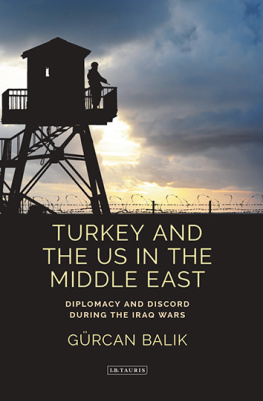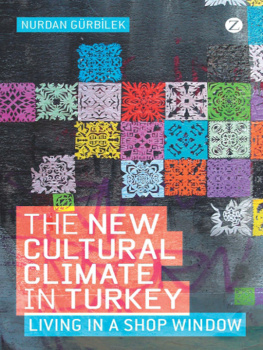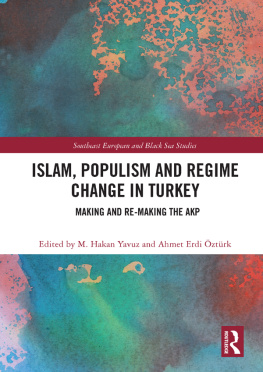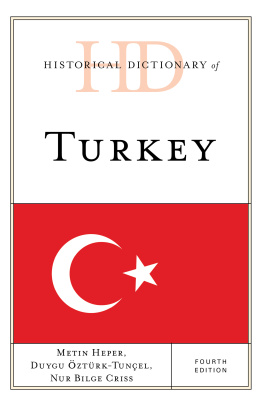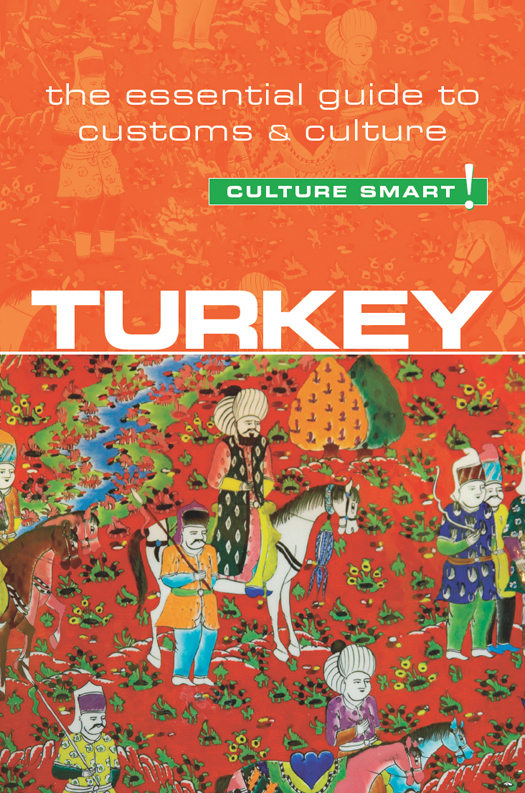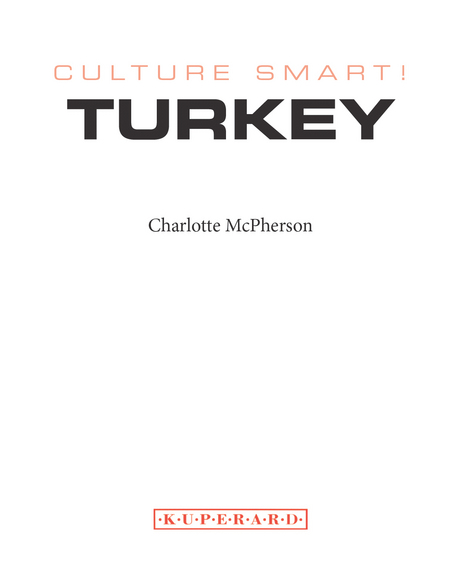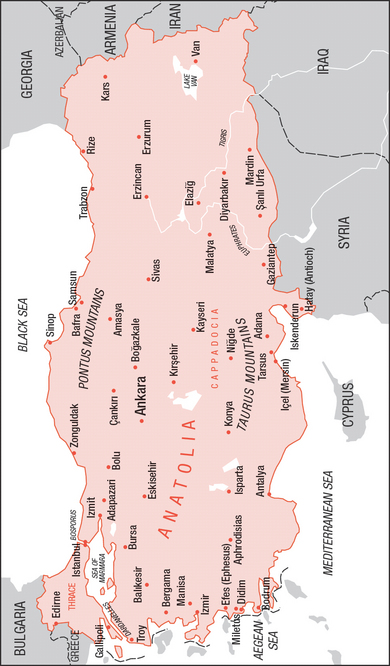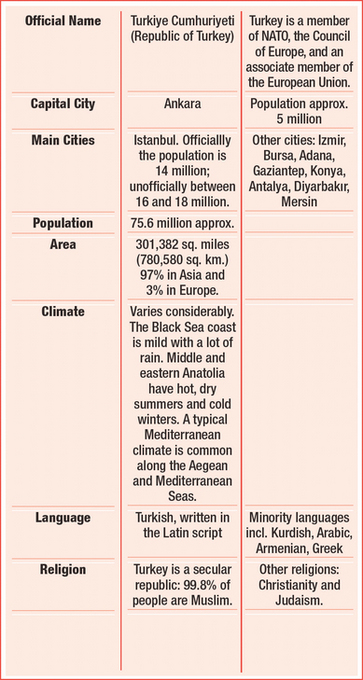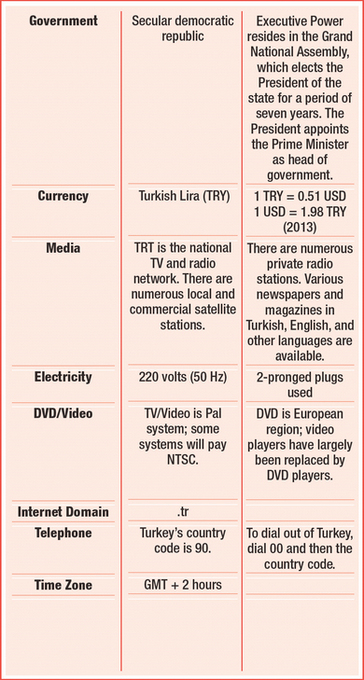ISBN 978 1 85733 693 1
This book is also available as an e-book: eISBN 978-1-85733-694-8
British Library Cataloguing in Publication Data
A CIP catalogue entry for this book is available from the British Library
First published in Great Britain
by Kuperard, an imprint of Bravo Ltd
59 Hutton Grove, London N12 8DS
Tel: +44 (0) 20 8446 2440 Fax: +44 (0) 20 8446 2441
www.culturesmart.co.uk
Inquiries:
Series Editor Geoffrey Chesler
Design Bobby Birchall
Printed in Malaysia
Cover image: Painted ceramic plate (detail) in Ottoman style. Shutterstock
Images on the following pages reproduced under Creative Commons Attribution-Share Alike 3.0 Unported license: sailko
Reproduced under Creative Commons Attribution-Share Alike 2.5 Generic license: archer10 (Dennis)
Photos on iStockphoto
v3.1
About the Author
CHARLOTTE M C PHERSON is an American who has lived in Turkey since 1979. For her graduate studies at Indiana University she specialized in Uralic Altaic languages and history. She has an MA in Anthropology, and during the 1980s she conducted extensive research in Turkey and Central Asia among Turkic-speaking peoples. She has lectured in Social Anthropology at Mimar Sinan University, Istanbul, and has written many scholarly papers and several books. She is currently Vice President of the Turkish-American Cultural Association in Istanbul, where she owns and manages a major English-language bookstore, Greenhouse.
The Culture Smart! series is continuing to expand.
For further information and latest titles visit
www.culturesmart.co.uk
The publishers would like to thank CultureSmart!Consulting for its help in researching and developing the concept for this series.
CultureSmart!Consulting creates tailor-made seminars and consultancy programs to meet a wide range of corporate, public-sector, and individual needs. Whether delivering courses on multicultural team building in the USA, preparing Chinese engineers for a posting in Europe, training call-center staff in India, or raising the awareness of police forces to the needs of diverse ethnic communities, it provides essential, practical, and powerful skills worldwide to an increasingly international workforce.
For details, visit www.culturesmartconsulting.com
CultureSmart!Consulting and CultureSmart! guides have both contributed to and featured regularly in the weekly travel program Fast Track on BBC World TV.
contents
Map of Turkey
introduction
Turkey has always attracted travelers. Over the centuries the landmass of Asia Minor, heart of the great multicultural Ottoman Empire and now the modern Republic of Turkey, experienced waves of migrations in which one civilization displaced another, leaving a unique and glorious cultural heritage. Its heroic landscapes, magnificent ruins, miles of stunning beaches, and legendary hospitality continue to draw visitors to its shores.
At first glance, Turkey seems Westernized and modern in many waysbut this appearance is misleading. It is a land of contrasts, a heady mixture of Oriental mystery and romance and ultramodern city life, deep-rooted religious faith and determined secularism, a fierce sense of national pride and openness to foreign ideas. Turkish culture is a distinctive blend of European and Middle Eastern ways of life.
One remarkable man was responsible for creating modern Turkey. In 1923 Mustafa Kemal (known as Atatrk, the Father of the Turks) took control and transformed the country from an absolute feudal monarchy to todays secular, democratic Muslim state. Tales of this one-man revolution abound, and he is genuinely universally revered. His image is still everywhere, and his legacy a source of national pride. Patriotism is a Turkish virtue, and the army is regarded as the defender of Atatrks secular democracy. Even Turkeys Islamic movement is committed to the separation of religion and state.
The Turkish people are very much their own center of gravity, and for the unwary visitor there are pitfalls to avoid as well as great riches to be found. Culture Smart! Turkey aims to help you understand the paradoxes of Turkish life. It outlines the complex history of Anatolia, and particularly the formative years after the First World War. It provides key insights into Turkish values and attitudes, describes important customs and traditions, and reveals what life is like for the Turks at home, at work, and at play. It offers practical tips and information about what to expect and how to behave in different situations.
This fascinating and important country is not only the cradle of European and Islamic cultures: it offers opportunities for business development, academic studies, and enjoyable exploration. The Turks are very hospitable, open, and pleased to meet foreigners. If you show an interest in their culture and respect for their point of view they will repay your effort many times over.
Key Facts
chapter one
LAND & PEOPLE
GEOGRAPHICAL SNAPSHOT
Situated at the southeastern corner of Europe, Turkey straddles the straits that divide Europe and Asiathe Dardanelles, the Sea of Marmara, and the Bosporus. Three percent of its landmass lies in Europe, giving it borders with Greece and Bulgaria, while 97 percent lies in Asia. The enormous Asian part, known as Anatolia, shares borders on the east and south with Georgia, Armenia, Azerbaijan, Iran, Iraq, and Syria. The country is bounded on three sides by water: the Aegean Sea to the west, the Mediterranean to the south, and the Black Sea to the north.
European Turkey is the most densely populated part of the country. In Anatolia, the population is densest in the west, in urban centers such as Istanbul, Bursa, Izmir, and Izmit, and decreases steadily toward the east. In the interior the population is concentrated along the paths of rivers and in towns such as Ankara, Eskiehir, Konya, Erzurum, Malatya, and Kayseri. Most of the Central Anatolian Highlands consist of undulating hills and broad, high plateaus from which mountains occasionally rise. The population of the south coast is massed on the fertile plains of Antalya and Adana, as well as in the province of Hatay, with its port of Iskenderun. There is a steady trend of people moving into the cities from rural areas However, in the past decade the Turkish government, in order to prevent further migration to urban centers has been working hard to mix historic preservation and urban revitalization with community development and sustainable tourism in eastern Turkey.



